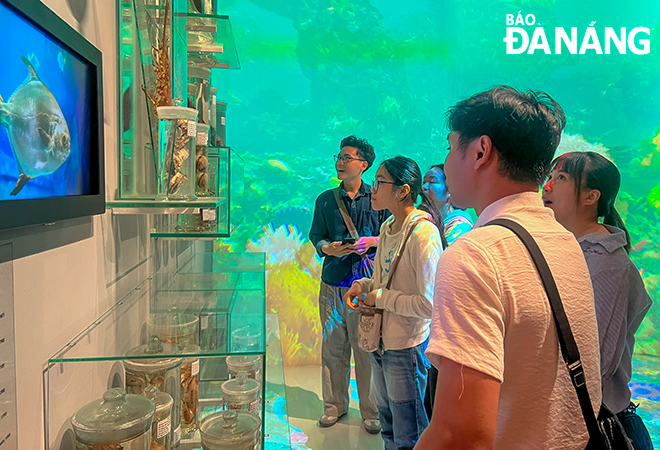Teacher reserves love for disabled students
After graduating Hue University's Teachers' Training College, Nguyen Duy Quy was assigned to teach at a high-school in Quang Nam Province. But instead, his fate lead him down a 16 year path teaching visually impaired students at the Nguyen Dinh Chieu School – a school for blind students – in Da Nang
The challenge of adapting teaching methods to meet the needs of disabled students was not a small one, it was a big change in Quy's life.
"It felt like I was also in the dark, learning how to lecture students in visually strong subjects. Most of my students are blind or elsewise visually impaired. They could hear and understand the lecture, but they could not draw or see the imagery of geometry, for example," Quy recalled.
"It was a struggle against time to find the best way to use and create new teaching tools for maths class. It took me three months to understand our students' needs," he said.
The 45-year-old teacher said his students use the Braille writing system to read books, but he had to create Braille characters for maths symbols such as triangle, circle or hexagon. "Straight lines can be easily recognised by raised dots, but the other illustrations are very difficult," he said.
In 2005, Quy created magnetic tools to be used for maths.
"It's my first breakthrough. I made a triangle, rectangular, circle and hexagon from metal pieces to explain the shapes to my students. These teaching tools can be used for long time," he said.
Quy's latest creation is an electronic stick that helps the blind cross the road safely.
"It's dangerous for the blind when they cross the road, with all that busy traffic. A normal stick can lead them across the street, but it doesn't give warning signals for other passers-by," Quy explained.
"I needed the assistance of physics teachers and mechanics to make a circuit connection with both a horn and a Light-Emitting Diode system. The aluminium stick is foldable and the blind can easy bring it when moving around," he said.
The school's 185 blind students now benefit from using the electronic sticks.
Quy's works don't stop there, he also translated figures in math books, and created compasses and a drawing board for students.
"I hope to do more for the disabled. It's my fate. My love is reserved for disabled kids," he said.




